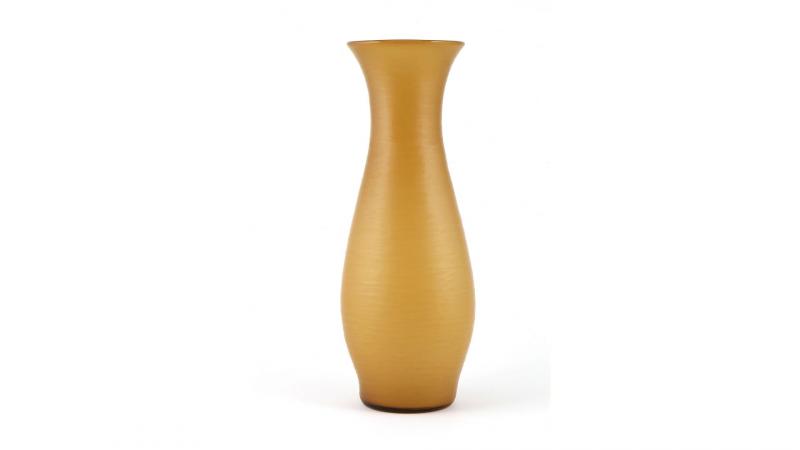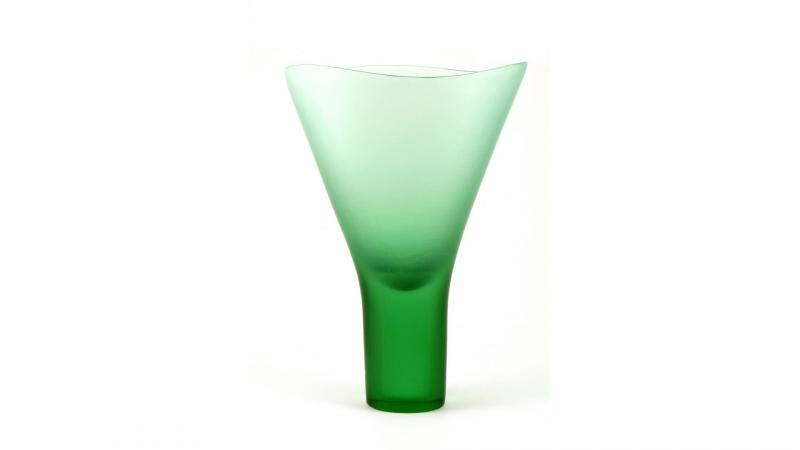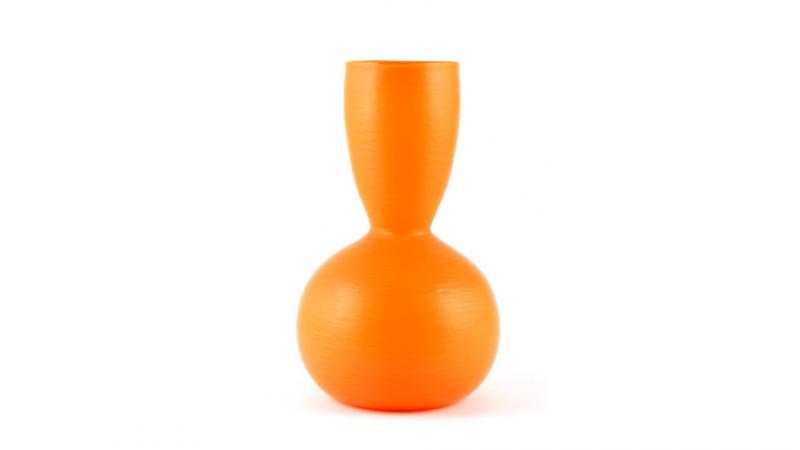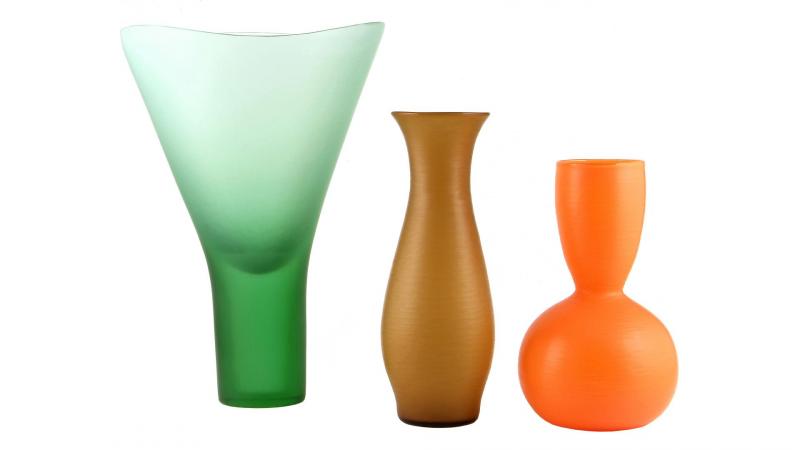During the 20th century, the legendary island of Murano was the crucible of a veritable renaissance in Venetian glass-making. Many figures from diverse backgrounds joined forces to found companies that produced glass artworks. Thus, in 1921, a Venetian antiquarian, Giacomo Capellin, a Milanese lawyer, Paolo Venini and the stylist Vittorio Zecchin founded "Vetri Soffiati Muranesi Capellin Venini & C”. This company ceased its operations in 1932.
Starting from 1933, bolstered by his experience, Paolo Venini (1895–1959) simply renamed his new glass factory "Venini" and asked the architect Carlo Scarpa (1906–1978) to collaborate with him as a designer of new forms and shapes. Scarpa was named artistic director and became one of the great creators or designers of the second "Novecento" of Murano. An outstanding colourist who combined old and new decorative techniques with original and modern forms, his achievements contributed to the international success of Venetian glassworks.
The two vases, which have harmonious shapes and amber and orange monochrome colours, were part of a series of pieces created in 1940. These were eye-catching thanks to the glowing tone of their colouring and aroused curiosity through the subtlety of their cut decorations ("incision"). These cover the entire surface of the glass and consist of a network of horizontal lines in low relief, which instil in the viewer the desire to touch it.
The large green vase was designed in 1960 by Tobia Scarpa, Carlo's son. He was a designer for the Venini glass factory starting from 1958. It had a massive cylindrical high base made from clear glass. The walls widen to form a very large section with elegantly wavy edges made from frosted glass.
These works are astonishingly modern and represent just one facet of the astonishing mosaic of shapes, decorations and colours of Murano glass art, which is still firmly rooted in contemporary 21st century design.



